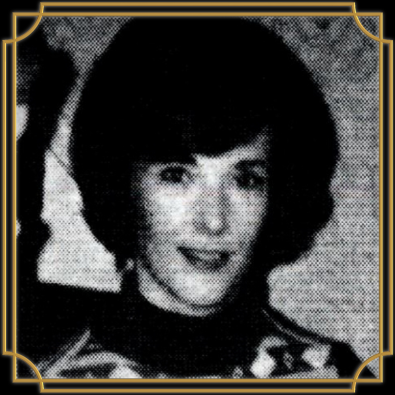Primary tabs

Patricia Crawford
Philadelphia, PA
United States
Summary
Patricia A Crawford (25 October 1940 – 28 May 2014) was an American origamist in the late ‘60s / early ’70s who was a contemporary of Robert Harbin, Neal Elias, and Lillian Oppenheimer and is credited with creating some of the most original and innovative models at the time. In a world dominated by male designers and “flat” models, she was innovating 3d and color change designs and base complexity far beyond that being produced at the time.
Life, Major Achievements and Contribution to the Origami World
Crawford was born Patricia Alice Tait on the 25th of October 1940 in Philadelphia, Pennsylvania USA, and lived her entire life in the Philadelphia area. She is known to have been a traditional homemaker and mother primarily but she was always driven, even as a child, to explore and invent in all areas of diverse crafting and technology. She was married at the age of 22 and had her first daughter a year later in ‘63. While Crawford knew some traditional models as a child she did not start exploring origami as a hobby until her mid-20s when she discovered “Paper Magic” by Robert Harbin at a local library who would soon become a friend and co-publisher of her work. She also made the acquaintance of Lillian Oppenheimer and The Origami Center in 1964 and started her explorations into design soon after that.
Over the time of her inventive career, Crawford is known to have designed and documented 44 models which can be broken down into two productive periods of invention with a 4-year “hiatus” in between. It has been rumored that family pressure made her move away from the origami community but personal correspondence reveals this is inaccurate as it was really more of a matter of competing interests and her desire to keep learning and inventing in new areas of technology and media such as miniature ships and the elaborate/embroidery crochet creations she designed in later parts of her life. Her early work (‘63-’67) tended to be more flat and simple while her later work (‘71-’74) took on the more recognized innovations and 3d modeling that her work is well known for. An intuitive folder, much of her later work including her very well-known “Unicorn” and “Full-rigged Ship” models were invented entirely in her head and came out complete and perfect upon the first folding.
Her best-known models were published in books by Robert Harbin in ‘71 – ’74 in Origami 2, Origami 3, and the classic Origami: A Step by Step Guide which was a showcase for her amazing work. Though she stopped designing soon after and moved away from the origami community additional models have been published periodically in the years following in books such as Harbin’s Origami 4 in ‘77 and JC Nolan’s Creating Origami in ‘91. Nolan is currently working on a retrospective of her entire body of work.
This article was Authored by JC Nolan, who owns all copyrights to all Crawford Models and can be contacted at info@creatingorigami.com